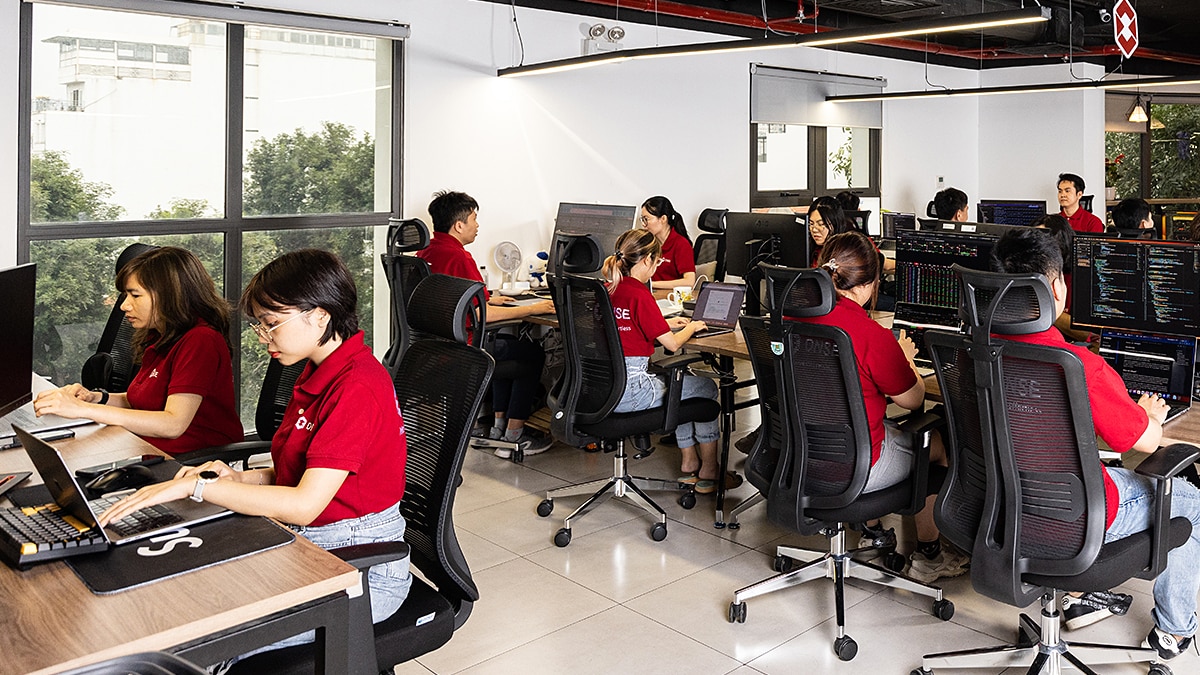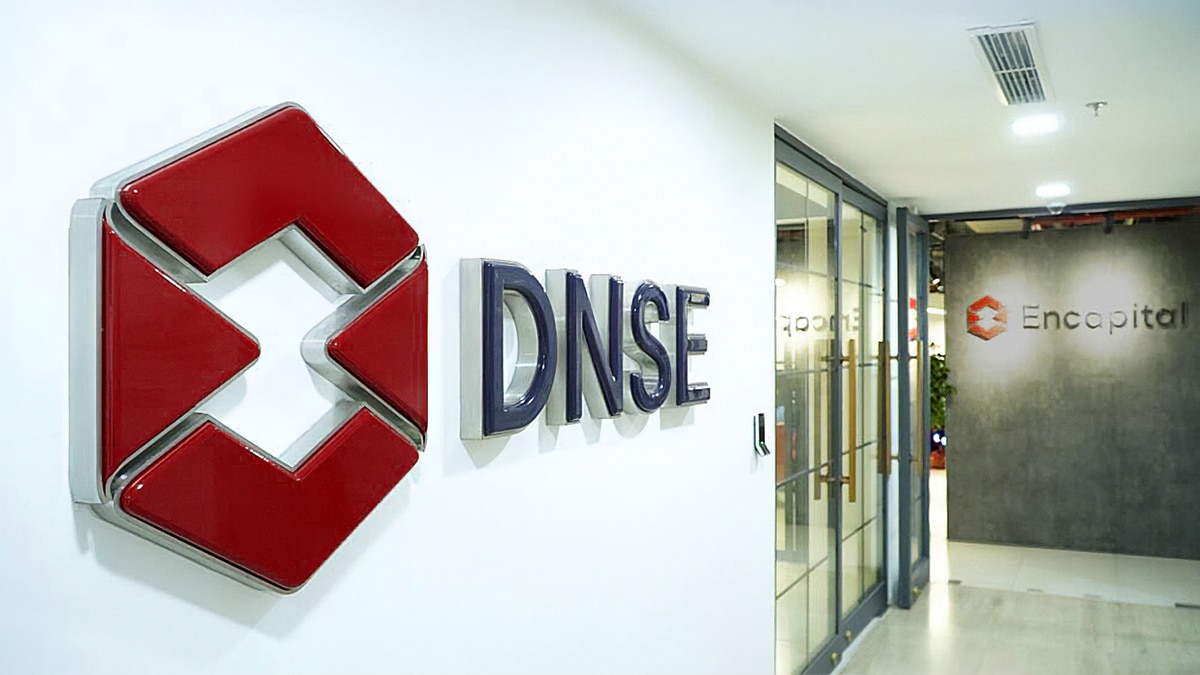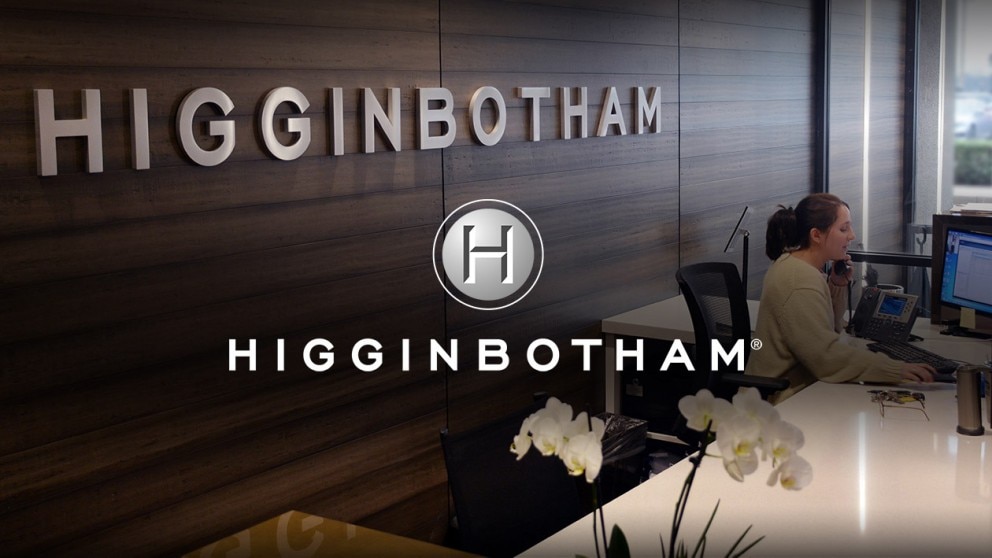DNSE gains performance and density for growth with AMD EPYC™ CPUs
Vietnamese stockbrokerage DNSE Securities doubled its server density, halved power consumption and reduced costs by deploying AMD EPYC CPUs.
Cutting edge FinTech services rely on compute power. As an emerging “neobroker”, Vietnam-based DNSE Securities is always looking for infrastructure that can help its bullish roadmap for growth. AMD EPYC™ processors are delivering the scaling potential DNSE needs to fulfill its expansion goals.
“We are a FinTech startup providing online stockbrokerage services to Vietnamese investors and traders,” says Binh Nguyen, Chief Technology Officer, DNSE Securities. “We have 2 to 3 percent market share and are sitting just outside the top 10 stockbrokerages in Vietnam. We're still in our growth stage and aim to be one of the top stockbrokerages in Vietnam. From there we will start thinking about going regional and global.”
“We mainly operate within the security trading space,” says Nguyen. “We provide online services so that Vietnamese investors and traders can register security accounts and trade mostly Vietnamese stocks. We are operating under the SSC, which is the equivalent of the SEC in the US. Similar companies globally would be Robinhood, or Zerodha in India.”
“We build our software almost entirely in house,” explains Nguyen. “We still adopt cloud-native software standards but due to government regulations, we must run our infrastructure for the trading products on-premises at a local data center. However, the way we build and run the infrastructure and software is as if it is running on public clouds.” This means that the requirements are like cloud native applications, namely high availability and horizontal scalability. “We chose Kubernetes as our software orchestration system. We employ many mixed workloads sharing servers, with a lot of context-switching and different CPU caching patterns.”

The challenges of mixed workloads
“We require our servers to have plenty of processor cores to run our mixed workloads, and lots of CPU cache, so each core running different workloads can have their share,” says Nguyen. “Because we are a small team, we also prefer to keep our data center footprint small. So when building our servers, one of the things that we think about is consolidation. We try not to run a lot of servers.”
“We build our software with a microservice architecture,” says Nguyen. “The majority of our workloads involve different APIs handling aspects of security trading like registration, auto management systems, and matching engines. We also run a variety of platform workloads such as databases like Postgres, SQL or MongoDB; event queues like Kafka; or caching services such as Redis. Because we run microservices, each of those might require a different database or event queue.”
This gave DNSE very specific requirements in its servers. “We always knew about Intel and AMD, so when we began to build up our infrastructure, we looked at both platforms,” says Nguyen. “Intel was the market leader, AMD was the newcomer, and we were a newcomer ourselves. We saw that AMD offers a better match with the way we deploy our software.”

Better density and performance per Watt with AMD
“We are a unique client,” explains Nguyen. “We know exactly what we're looking for in servers because we build software ourselves. There are a few things that pulled us towards AMD EPYC CPUs. One was because we run a lot of mixed workloads, having a lot of different processor cores helps. In our experience, AMD EPYC CPUs also have the most CPU cache. Also, because we are still a startup, we care a lot about cost per compute and return on investment, which we found are better for AMD EPYC CPUs.”
DNSE ran a variety of tests to confirm this. “We ran benchmarks that emulate the environment where a lot of busy workloads compete for CPU power,” says Nguyen. “We also ran benchmarks to saturate the caching and exaggerate the socket-to-socket communication between the CPUs. We compared these to the Intel-based systems we used before. At the basic level of clock speed, Intel usually wins. But when we started running a lot of mixed workloads to push the system to the limit, AMD EPYC CPUs provided faster and more predictable performance. Migration was also easy because both Intel and AMD are essentially the same x86 platform and we don't use a lot of specific CPU instructions.”
“We run many containerized workloads with Kubernetes,” says Nguyen. “AMD EPYC CPUs enable consolidating these. Instead of running 30 or 40 different servers each with 80 processor cores, now we only need to run 12 to 15 servers each with 96 to 128 processor cores. That consolidation helps our management of the infrastructure, while saving cost and power because instead of three racks, we only need to run one and a half. We save on other things like network switches, too. The performance per watt of AMD EPYC CPUs is better. Instead of a three-foot rack, which consumes 16 to 17kW of power consumption, we only need to run one and a half, which is 7 to 9kW.”

AMD EPYC provides room for growth
“We are very conscious about our infrastructure investment,” says Nguyen. “Making a smarter investment there allows us to spend more elsewhere. We predict the amount of compute that we need for growth for the next few years. Then we buy more than that so we always have the capacity to grow because the business can expand fast. The cost-saving and the better value for performance of AMD EPYC processors helps with that.”
“The two most important features of AMD EPYC CPUs for us are the high number of cores per socket and the large cache,” says Nguyen. “Around 90 percent of our workloads are now running on AMD EPYC CPUs. Our servers usually have two sockets, and we have 40 to 50 servers right now running on AMD. Half of them run 3rd Gen and the other half 4th Gen AMD EPYC CPUs. We have a few different types of EPYC processors. Some are the F series with higher clock speeds and about half of them have a lot of cores per socket. We use the F series for things like our exchange gateway where we run our Order Management system and our market data feed. We also run some of the smart order features and risk management on the F series to take advantage of the higher clock speed.”
“We plan to deploy additional x86 servers and we are very likely to keep picking AMD EPYC CPUs,” says Nguyen. “The workloads we intend to run on EPYC will still be a lot of mixed ones, and we are expecting to grow quickly in the next couple of years. The need for us to invest in more servers comes from the need to scale to serve more customers. I expect EPYC to keep getting better performance per watt with better value. AMD EPYC CPU-powered servers will enable us to keep building infrastructure and running our software how we run it right now, but at a much bigger scale.”

About the Customer
DNSE Securities is an online stockbrokerage based in Hanoi, Vietnam. With the mission to “make investing effortless for Vietnamese people,” DNSE is pioneering the application of cutting-edge technology to develop efficient, data-driven financial products that enhance customers’ investment capabilities. The company provides a trading platform focusing on speed and user experience, offering a simplified interface for stock trading, with the goal of becoming a leading FinTech company in Vietnam’s digital market. For more information visit www.dnse.com.vn.
Case Study Profile
- Industry:
Financial Services - Challenges:
Provide the performance, power consumption, low cost and density to meet the needs of rapid growth in the online stockbrokerage business. - Solution:
Deploy 3rd and 4th Gen AMD EPYC™ CPUs in its on-premises data center servers. - Results:
Half the data center racks required with half the power consumption, reduced costs, and better overall performance under heavy load. - AMD Technology at a Glance:
3rd Gen AMD EPYC™ CPUs
4th Gen AMD EPYC™ CPUs









